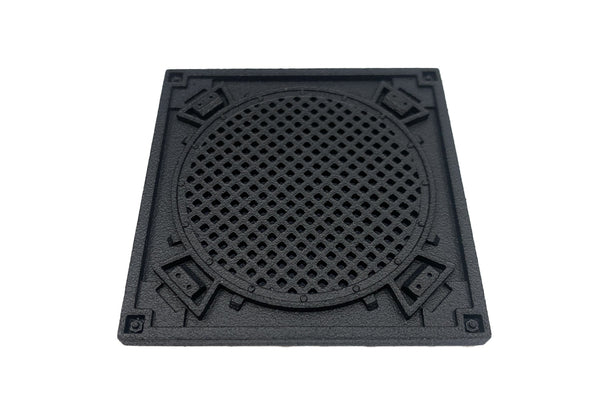Academy 1:35 - T-34/76 No. 183 Factory Production
ACA13505
Sold Out
Academy 1:35 - T-34/76 No. 183 Factory Production - Plastic Model Kit #13505
The Soviet medium tank T-34 was the most produced tank of WWII that replaced many light and medium tanks in service with the Red Army. The initial version of the T-34 was equipped with a powerful 76.2 mm gun, and is often called the T-34/76.
Most of these tanks were produced at Factory No.183 which in September 1941 was evacuated from its original location in Kharkiv to Nizhniy Tagil when it became clear that Kharkiv was in danger of falling to the Germans. Factory No.183 in Nizhniy Tagil (Uralskiy Tankovyj Zavod, Ural Tank Factory) produced just over 15 thousand of the T-34/76 tanks. By the end of WWII, T-34's comprised at least 55% of the Soviet tank production. In the beginning of the war this figure was 4%.
When Germany launched the invasion of the Soviet Union, the T-34 was superior to any German tank and destroying T-34's in combat proved to be very difficult. However, the Red Army had still lost large numbers of these new tanks in 1941 due to the tactical and operational skills of the Germans as well as mechanical breakdowns which accounted for at least 50% of Soviet tank losses at the time. In the following years the T-34 saw a number of improvements while Germany continued to develop anti-tank guns capable of penetrating the T-34's armour. By 1943, the 76.2 mm gun was unable to penetrate the armour of the new German tanks and the Soviet Union began the production of the improved version of the T-34, the T-34/85.
Markings are provided for five options:
T-34/76, Unidentified Unit, Prokhorovka, July 1943
T-34/76, 264th Armoured Brigade, Ukraine, December 1943
T-34/76, Unidentified Unit, Kursk, July 1943
OT-34/76, Unidentified Unit, Pskov, Recovered in 2006
OT-34/76, Unidentified Unit, Unknown Area
Tank dimensions: Height 73 mm, Length 193 mm
Box size: 403 x 264 x 68 mm
Download the instruction manual here.
Related Items
Soviet Sniper WW2 1/16th scale
£45.00 GBP
Highly detailed 1/16th or 120mm scale miniature, capturing the uniform and equipment of a WW2 Soviet Sniper. The kit comes with three head configuration options, fur hat with ear flaps known as the 'Ushanka', a head with helmet (2 parts) and a head with a cap known as the 'Pilotka'.
This is ideal for a diorama or bust depicting Soviet Snipers such as Vasily Grigoryevich Zaitsev. Between 10 October 1942 and 17 December 1942, during the Battle of Stalingrad, he killed 225 enemy soldiers. Zaitsev became a celebrated figure during the war and later a Hero of the Soviet Union, and he remains lauded for his skills as a sniper.
Operation Frankton RMBPD Set - WWII Cockle Canoe + Royal Marines
£45.00 GBP
1:35 - Major Herbert George "Blondie" Hasler - Resin kit
Herbert George "Blondie" Hasler was a Lieutenant Colonel of the Royal Marines. In 1942, a 28-year-old Hasler planned and led Operation Frankton. The operation was a commando raid on Axis shipping in the French port of Bordeaux occupied by the Germans. The mission was to attach mines to the hulls of German cargo ships. Three of the five canoes were lost on the way to the port. The surviving crewmen including Hasler reached the port successfully, placed the mines and managed to drown four cargo ships. They then walked 100 miles to a French village where they met with members of the Resistance and started their journey back to England through Spain and Gibraltar. For this operation Hasler was awarded the Distinguished Service Order by King George VI.
One kayak was damaged while being deployed from the submarine, and it and its crew therefore could not take part in the mission. Only two of the 10 men who launched from the submarine survived the raid: Hasler, and his number two in the kayak, Bill Sparks. Of the other eight, six were executed by the Germans and two died from hypothermia.
This product is available in two scales, 1:35 and 1:24 and was painstakingly designed from scratch as a digital model.
The kit includes: 2 x miniatures (Blondie Hasler and Bill Sparks) in their folding Cockle Canoe named 'Catfish' made by Campaign Models (UK).
Now available, while stocks last.
Miniature Diorama Display Base
£9.50 GBP
This highly detailed Diorama base is ideal for mounting one or two figures on display. Small enough to be displayed easily, big enough to provide enough space to set the scene. More styles coming very soon!
Dimensions: 58mm x 58mm x 4mm
1:35 Resin Miniature WWII German Soldier Eastern Front
£15.00 GBP
A detailed single (1x) resin miniature in 1:35 scale, posed to be standing while smoking a cigarette. The kit consists of the following parts:
Head/torso
Helmet
Right arm with MP40
Left arm/hand
Left leg
Right leg
M1931 Bread Bag - with M1931 Field Flask and Mess tin combined
Ammunition Pouch
Spare MP40
Sidearm in holster























